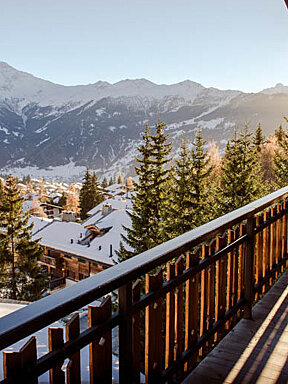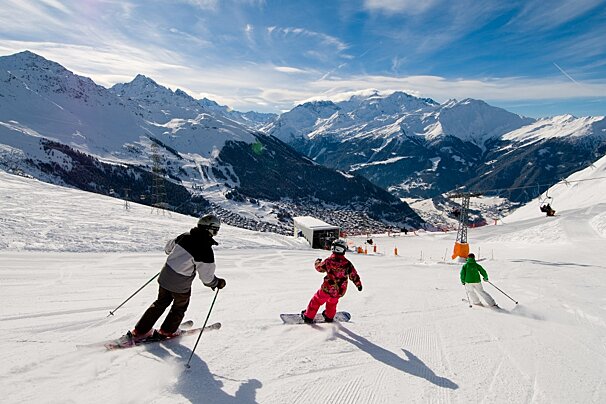
© Andy Lloyd - www.alpictures.eu
Carving turns on your skis
Carving is one of the best feelings on skis
If you want to feel the power of the curve this season you need to develop and hone your carving skills. So... what is carving?
Carving is when the path of the ski tip and tail are the same. A carving ski will leave a clear, clean, thin track in the snow and when both skis are carving you will leave two lines in the snow rather like railway tracks.
Modern skis are designed to help you carve because they are shorter and have a lot of sidecut. This simply means that the ski is narrower under your foot and wider at the tip and tail. Skis with a greater the side cut will be able to make a tighter turn radius. However, no matter what the dimensions of your skis they will need the right input from you!
To learn to carve you need very gentle terrain where you are comfortable allowing your skis to run at speed. Practice carving from a straight run position with your skis flat. Then roll your ankles so that the skis are very slightly tilted onto their edges. Allow the skis to respond to this movement and then roll your ankles in the opposite direction. By using very minimal tilt of your skis you can link carved turns close to the fall line.
As you develop a feel for this you can start to tilt your skis a little more, becoming aware of your knees as well as your ankles. This will result in the skis turning more, further round the curve.
When you turn this much you will need to be very gradual with your movements to avoid any skidding. Again try to link your turns together, developing your feel for the lateral movements of both ankles and knees. To aid stability throughout, try to ensure that you tilt both skis, (ankles & knees), the same amount.
To progress further you should head for the blue runs which offer a variety of very easy and slightly steeper terrain. Your main goal is to keep your skis carving and reduce skidding to a minimum. Your control of speed is coming from the shape of your turn rather than skidding to brush off speed. Develop your ability to ski faster and notice that with increased speed you will begin to feel your hips moving more to the inside of the curve. Always edge your skis using your ankles, knees and hips in that order.
And finally, above all, ski safely. If the run is too busy, make some regular turns (using some skidding). Only carve where you have a clear slope ahead of you. Happy carving!
Thanks to Derek Tate director of British Alpine Ski School Chamonix for this article. Further information on carving is available in the book "Parallel Dreams Alpine Skiing" by Derek Tate.




























